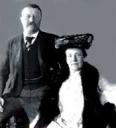
The quote is attributed to Thomas Jefferson in an 1815 letter to John Adams. Like most Jefferson quotes it’s taken a little out of context. In the rest of the sentence TJ clarifies that he could certainly live with fewer books, “where amusement, and not use, is the only future object”. In fact, Jefferson sold over 6,000 volumes of his personal collection to restock the recently destroyed Library of Congress.
Civil War enthusiasts are notorious bibliophiles, and I’m no exception. I have just short of 1,600 Civil War titles in my library, not counting magazines and journals. To some of you that may sound like a lot, but to others not. Since I began to concentrate on the outbreak of the war in general and Bull Run in particular, I’ve noticed that I don’t buy nearly so many books. Thank God for a little focus.
The fact is I have more unread books right now than I could ever possibly read. Of course, I have no intention of reading many of them – cover to cover, that is. Take the ORs for instance (War of the Rebellion, Official Records of the Union and Confederate Armies, ORs for short). I have them on CD. I have them on DVD. They are available for free from several sources online. Yet I also have about 100 volumes on my shelves. Why? I have no idea. I just like books. I like to hold them in my hands and flip through them and see where they take me. I like to read something in a blog post or on a discussion group and then yank a book off my shelves to find an answer or get more detail. Not that I don’t take advantage of the ever growing number of books available for free downloading online. I do. But I have a real hard time actually reading them online. I print out lots of pages, and have many books and parts of books in this format in plastic binders (but I don’t count those as part of my library – that would be cheating).
Lately I’ve gotten into buying reference works. I have the massive single volume edition of Dyer’s Compendium, Heitman’s Historical Register and Dictionary of the U.S. Army, Fox’s Regimental Losses, Lincoln Day by Day, and AL’s Collected Works. All of these are available free online. It seems to me that if a reference book is not available for free downloading online, it will be shortly after I buy it. The Reports of the Joint Congressional Committee on the Conduct of the War are available, but if I find the volume I need (the second volume, which includes Bull Run) at a good price, I know I won’t be able to resist. I buy 90% of my books second hand, either at one of four used book stores I haunt or on Ebay, though I’m finding it harder and harder to get really good deals on the latter. I also buy from Amazon’s market place, which has good deals on used and remaindered books. And last year I bought the four volumes of Dornbusch’s Military Bibliography of the Civil War at the Mansfield, OH show. Morningside had a table there, and the price was right.
I made some pretty good buys (I think) last week, and will share them with you now.
J. Willard Brown, The Signal Corps in the War of the Rebellion. It’s a Butternut and Blue reprint of the 1896 edition that I picked up for $15 (using a 50% off coupon). Jim McLean at Butternut and Blue should be pleased that Half Price Books in Pittsburgh put a bunch of recently purchased B&B books in their collectible section. A nice reflection on the quality of his books.
Jesse Bowman Young’s The Battle of Gettysburg. A reprint of the 1913 edition that can be found online, but it only cost me eight bucks. Sadly, I have about 125 books on the Gettysburg Campaign. Admitting that is a big step in the right direction, I think. I hope.
Nicholas Lemann’s Redemption, The Last Battle of the Civil War, which just came out in 2006. Eight bucks.
Another B&B reprint, Historical Sketch of the Nottoway Grays by Richard Irbay. This is the story of Company G of the 18th VA. It includes an interesting account of the treatment of wounded Federals at First Bull Run. I’m finding that a lot of the stories of atrocities there which are often dismissed as myth have their bases in cold hard fact. Also more confusion caused by red pants. Twelve dollars.
An Easton Press edition of Fuller & Steuart’s Firearms of the Confederacy which I couldn’t pass up for $15.
Civil War Naval Chronology, 1861-1865, compiled by the Naval History Division of the Navy Department and printed by the GPO. This is the single volume 1971 edition of the six volumes printed during the Centennial (thanks to friend David Langbart for filling me in on the history). A really cool reference. It includes chronologies for each year of the war, highlighting naval events. It also has twelve appendices, including naval sheet music and the journal of a US Marine. I got it for all of $19.
I also found a couple of modern biographies of prominent Bull Runners Edward Porter Alexander and John Imboden for six and eight dollars, respectively.
The last I’ll mention are five of the nine volumes of The Official Army Register. Most of these are available online, but I think they are the individual years rather than the four year compilations reprinted by Ron R. Van Sickle Military Books in 1987. I got them for $3.98 each. I have found the rest of these on Bookfinder, for about $30-$40 per volume. These list the officers and their promotions, resignations, dismissals and deaths for each regiment mustered into Federal service. Their use is a little limited for my purposes though, because most ninety day units are not included. Like the Massachusetts Military History Society volumes (I have six out of fifteen), I’ll be keeping an eye out for the ones I’m missing.
I like books. I like ‘em a whole lot. How about you?



































Recent Comments